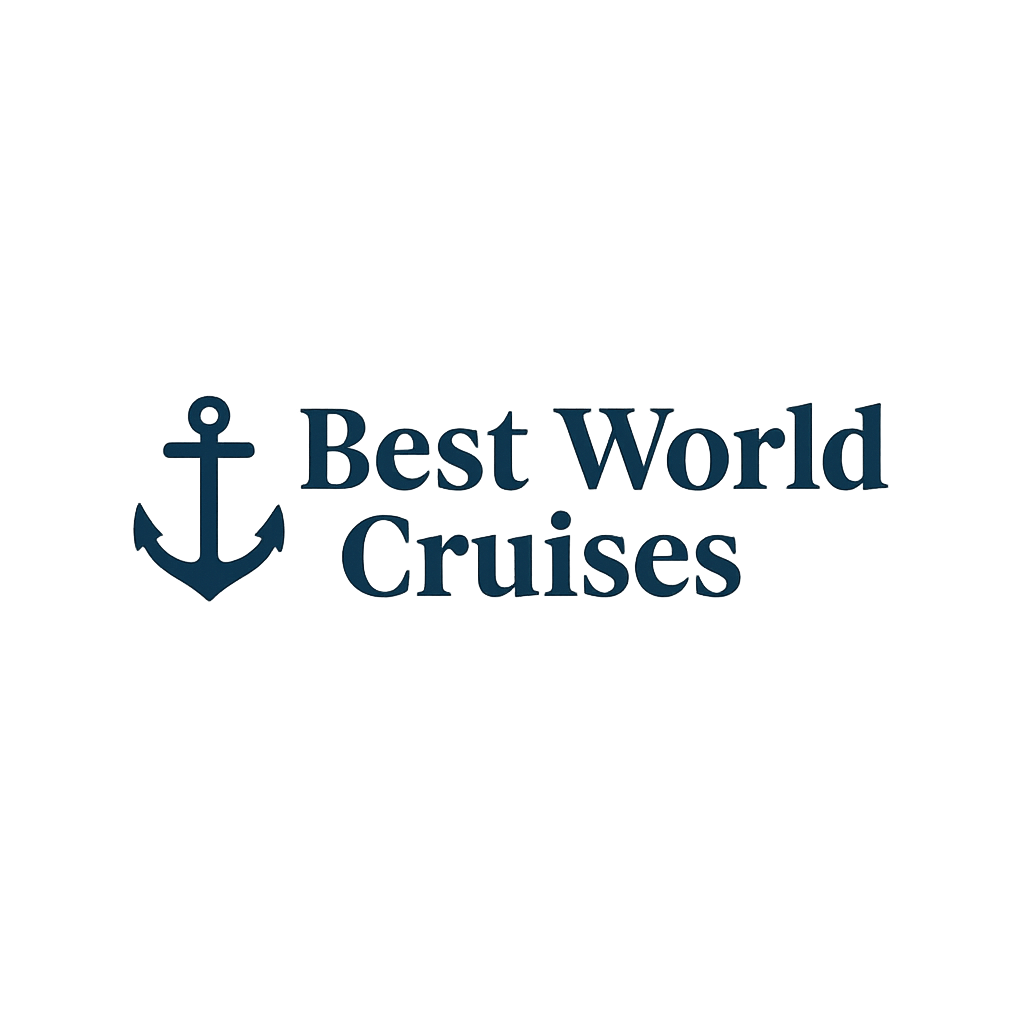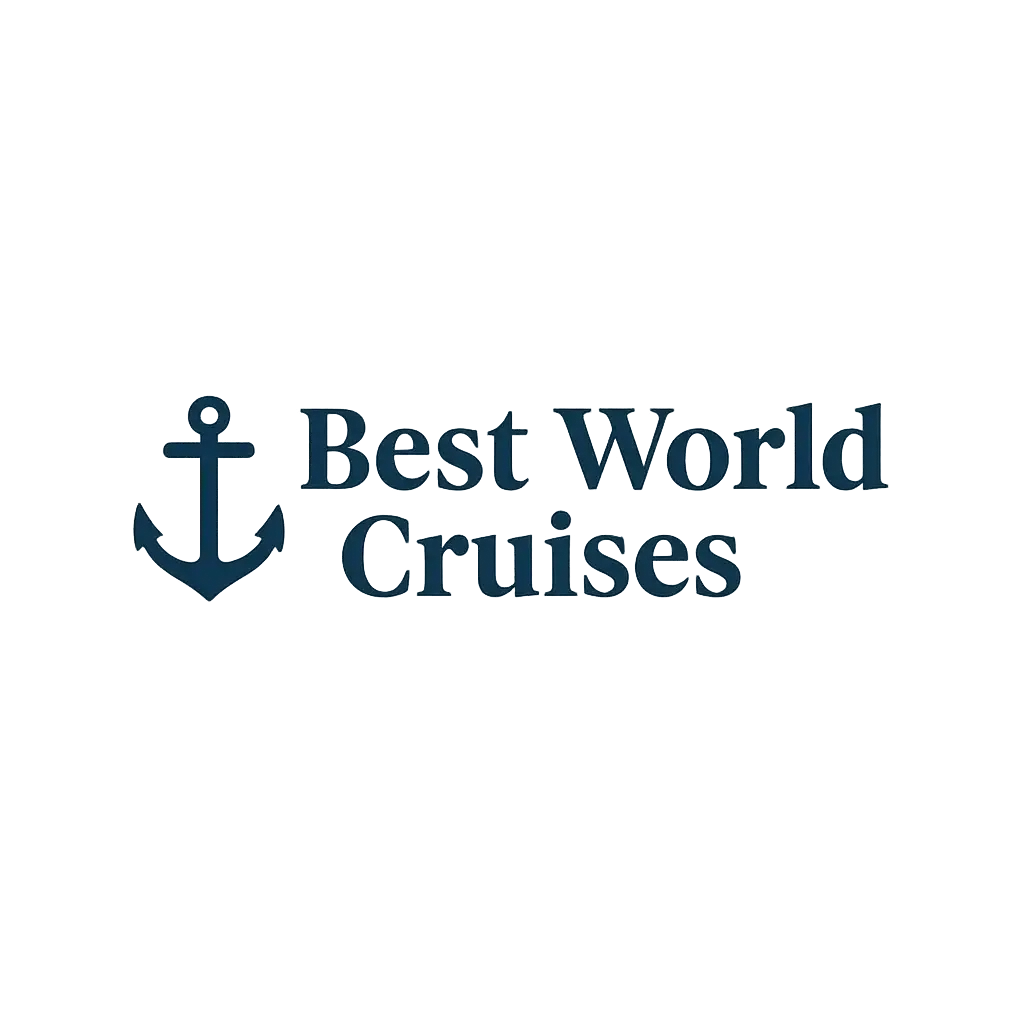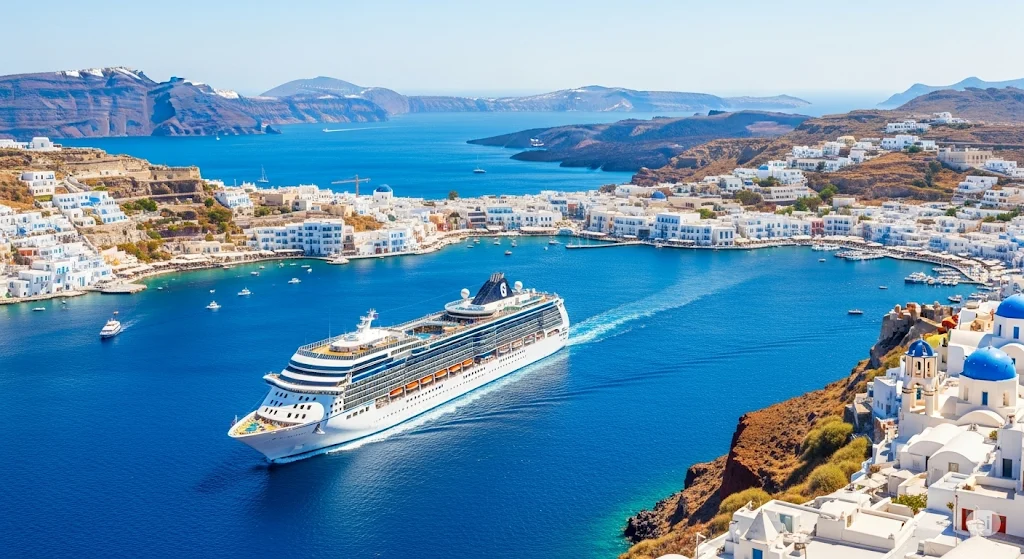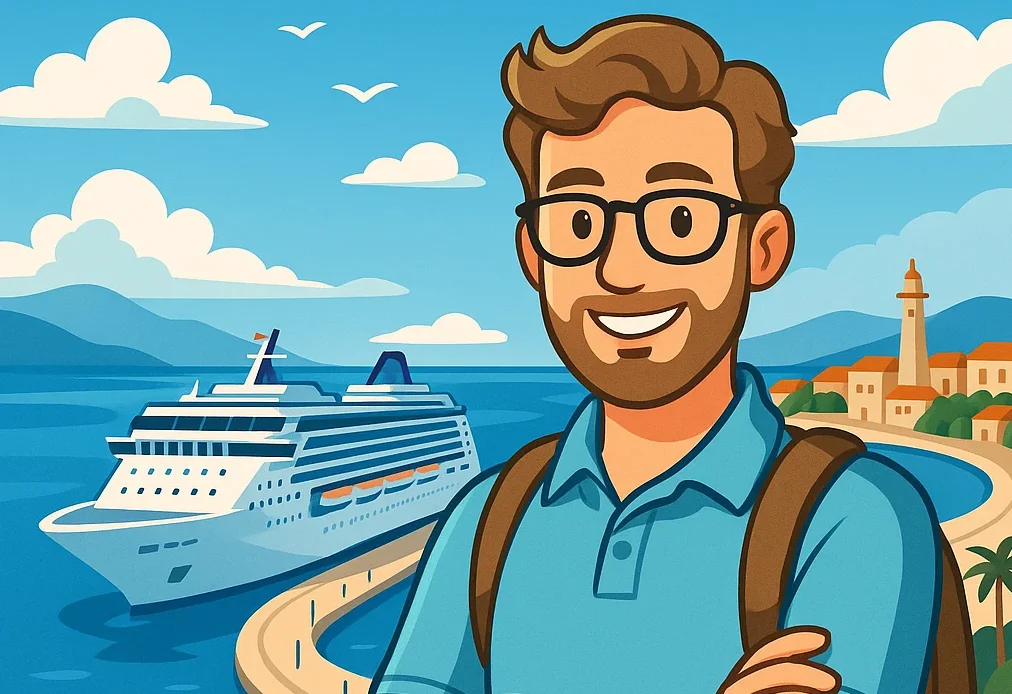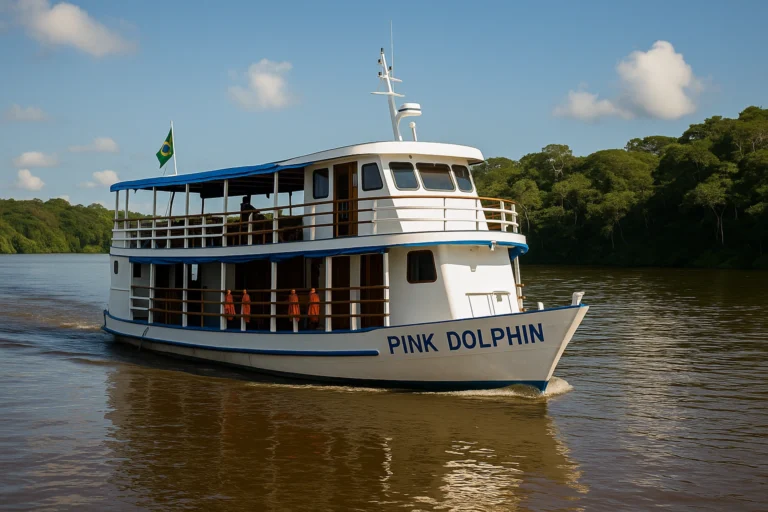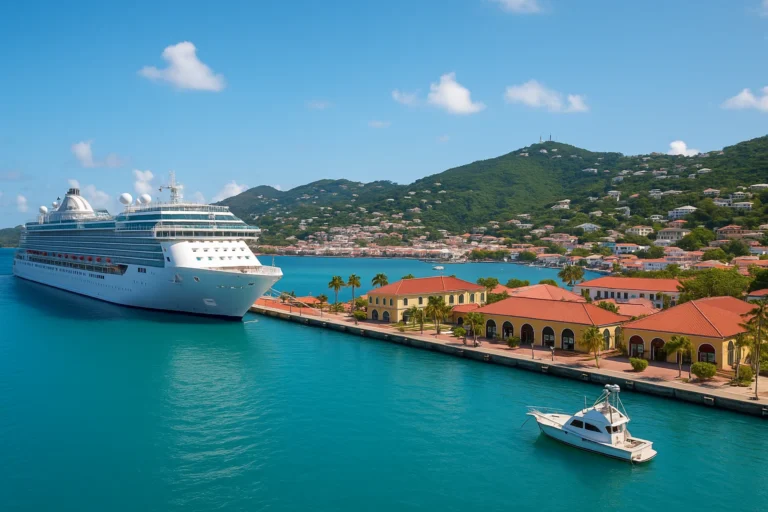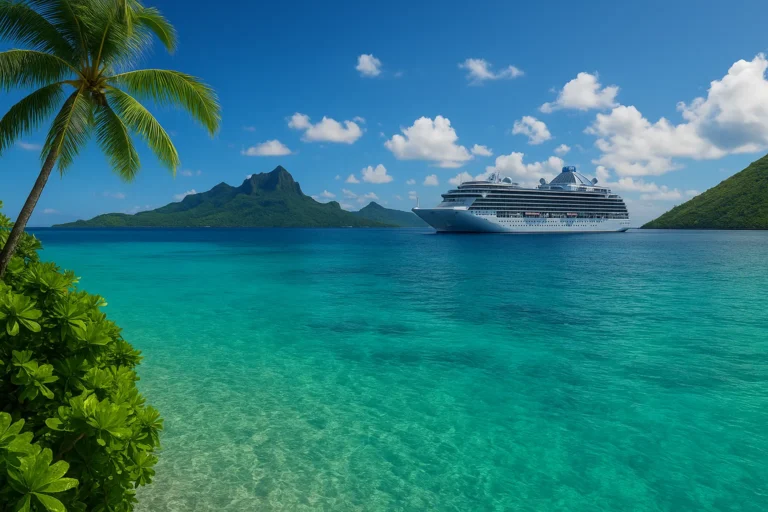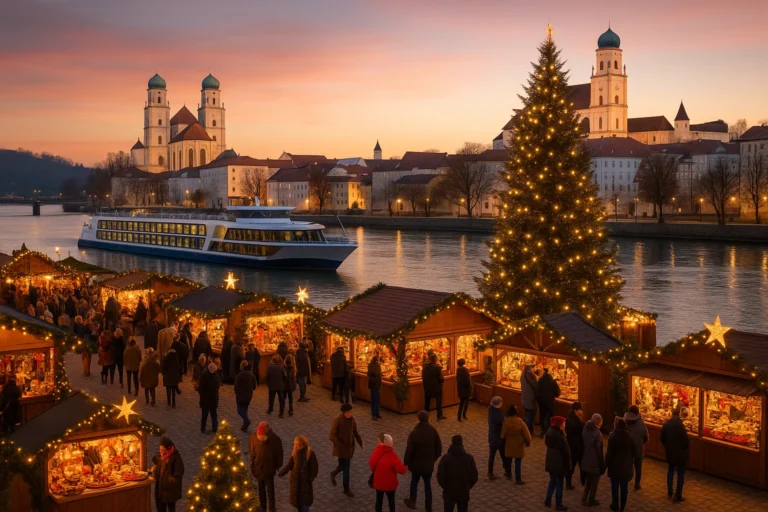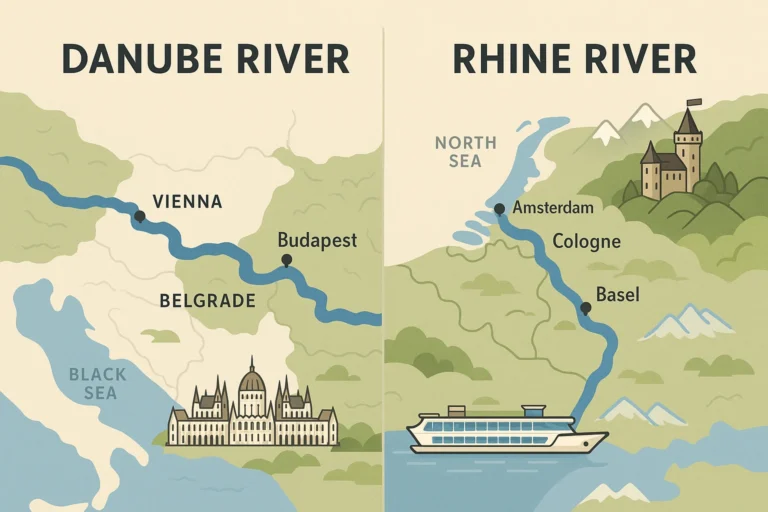Greek Islands Cruise Guide: Best Ports & Hidden Gems (2025)
Navigating the Greek Islands: Understanding Your Cruise Journey and What Influences It
The ultimate success of any Greek Islands cruise is intrinsically measured by two key elements: the seamless and effortless flow of your entire journey, and the richness and depth of the experiences you accumulate along the way. Both of these crucial aspects are constantly influenced by a series of essential, interconnected factors that collectively provide a clear and comprehensive picture of the overall conditions you can expect to encounter. Being aware of these elements allows for proactive planning and a more enjoyable, stress-free vacation.
Key Factors Influencing Your Cruise Experience:
- Weather Conditions: The Mediterranean, particularly the Aegean, is known for its sometimes unpredictable weather patterns. Strong winds, most notably the **Meltemi**, a dry, northerly wind prevalent during the summer months (July and August), can significantly affect sea conditions. These winds can range from a gentle breeze to a powerful gale, leading to choppy waters, which might result in itinerary changes, such as skipped ports of call if tender operations become unsafe, or simply a less comfortable journey with noticeable ship movement. Conversely, calm weather ensures smooth sailing, maximizes comfort, and allows for uninterrupted shore excursions and scenic views. It’s crucial to monitor forecasts, as cruise lines prioritize passenger safety and will adjust plans accordingly.
- Itinerary & Port Selection: The specific islands and ports meticulously included in your cruise itinerary are the primary determinants of the type of experience you will ultimately have. Some itineraries focus on bustling, cosmopolitan islands famed for their nightlife and designer boutiques, while others gravitate towards tranquil, lesser-known gems offering a more authentic and serene escape. Carefully review the itinerary to ensure it aligns with your travel preferences – whether you seek historical immersion, beach relaxation, vibrant nightlife, or adventurous excursions. The duration of stops, whether full days or half-days, also significantly impacts your ability to explore.
- Ship Size & Type: The dimensions and design of your chosen cruise ship play a critical role in your Greek Islands experience. Larger, mega-ships often boast an incredible array of onboard amenities, including multiple pools, diverse dining options, theaters, and shopping arcades, offering a “resort at sea” experience. However, their size often restricts them from docking directly at smaller, more picturesque ports. In such cases, passengers are ferried ashore via **tender boats**, which can add considerable time to disembarkation and re-embarkation processes. Conversely, smaller ships, boutique cruises, or traditional yachts offer unparalleled flexibility, allowing direct access to quaint, hidden coves and charming smaller ports that larger vessels simply cannot reach, often providing a more intimate and personalized experience.
- Time of Year: The season in which you choose to cruise has a profound impact on almost every aspect of your trip. The **peak season (July-August)** typically means higher temperatures, more intense sun, and significantly larger crowds at popular sites and ports, leading to increased prices for flights, excursions, and sometimes even onboard services. The **shoulder seasons (May-June and September-October)** are often considered ideal, offering wonderfully pleasant weather, fewer tourists, and often more attractive pricing. These months provide a perfect balance for exploring historical sites comfortably and enjoying beaches without feeling overwhelmed. Even spring (April) and late autumn (November) can offer unique advantages, such as blooming landscapes or tranquil seas, though some services might be reduced.
- Local Events & Holidays: Greece is rich in traditions and celebrates numerous public holidays and religious festivals throughout the year. These events can significantly impact your cruise experience by affecting port services, leading to closures of shops or attractions, altering local transport schedules, or creating exceptionally lively atmospheres. For example, Greek Orthodox Easter is a major celebration with unique customs that can be fascinating to witness but might also mean some businesses are closed. Researching major local holidays on your chosen dates can help you anticipate these changes and plan accordingly, potentially allowing you to participate in unique cultural experiences.
Understanding these intricate factors empowers you to make informed decisions during the planning phase and helps you anticipate potential changes, ensuring you can adapt and ultimately make the absolute most of your unforgettable Greek Islands cruise.
Impact of Cruise Factors Across the Greek Islands: From the Cyclades to the Dodecanese
While the term “Greek Islands cruises” broadly encompasses a vast region, the actual impact of various cruise factors and the specific trends you’ll encounter can vary significantly from one island group to another. Each archipelago, and indeed each individual island, possesses its own distinct personality, challenges, and rewards for the discerning cruiser. Here’s an in-depth analysis of key areas and what to expect:
1. The Cyclades (Mykonos, Santorini, Paros, Naxos, Milos, Ios, Folegandros)
The Cyclades are arguably the most iconic Greek island group, instantly recognizable by their whitewashed villages, blue-domed churches, and dramatic volcanic landscapes. This popularity, however, comes with its own set of cruise considerations.
- Mykonos & Santorini: These twin jewels of the Cyclades are consistently at the top of every cruiser’s wish list. They are undeniably iconic, yet also notoriously crowded, especially during the peak season months of July and August. Due to their limited port infrastructure and the sheer volume of visitors, large cruise ships frequently need to anchor offshore, requiring passengers to use **tender boats** to get to shore. This process can sometimes lead to significant queues and delays, so factor this into your shore excursion planning. Once ashore, expect bustling streets, vibrant nightlife (especially in Mykonos’s Chora), and for Santorini, the breathtaking, albeit crowded, caldera views and iconic sunsets from Oia. Booking popular excursions or restaurant reservations well in advance is highly recommended here.
- Paros & Naxos: Offering a slightly more relaxed pace than their famous neighbors, Paros and Naxos are known for their beautiful sandy beaches, charming traditional villages, and excellent windsurfing conditions. Smaller cruise ships or ferries often provide direct dock access, making disembarkation smoother. These islands are ideal for those seeking a harmonious balance of activity (like exploring ancient ruins or quaint towns) and tranquil beach relaxation, away from the intense crowds.
- Milos & Ios: Milos stands out for its unique volcanic landscapes, including the lunar-like Sarakiniko beach, and its rich geological history. Ios is popular with younger travelers for its lively party scene, but also boasts stunning beaches and a picturesque main town. Depending on the cruise line, these islands might offer a more niche experience.
- Folegandros: A true hidden gem, this small, rugged Cycladic island offers dramatic cliffs, a charming, untouched Chora (main town), and a profound sense of tranquility. It’s typically only accessible by smaller boutique cruise ships or local ferries, making it perfect for those seeking an authentic and quiet escape from the masses.
- General Impact in the Cyclades: The **Meltemi winds** can be particularly strong in this region during summer, potentially leading to rougher seas and affecting tender operations. Cruise captains will always prioritize safety, so be prepared for potential itinerary adjustments. Port congestion is a frequent occurrence for popular islands, making early morning arrivals or late departures crucial for maximizing your valuable time ashore. Consider joining early-bird excursions or planning independent exploration at less busy times of the day.
2. The Ionian Islands (Corfu, Zakynthos, Kefalonia, Paxos, Antipaxos)
Located off Greece’s west coast, the Ionian Islands are distinct from the Aegean islands, characterized by their lush green landscapes, Venetian and British architectural influences, and generally calmer, deeper waters.
- Corfu: This large, verdant island is often a highlight, known for its magnificent Old Town, a UNESCO World Heritage site, with its Venetian fortresses and elegant architecture. It often serves as a primary port of call for cruises starting or ending in Italy or other parts of the Adriatic. Excursions often include visits to Achilleion Palace or exploring the charming narrow streets of the Old Town.
- Zakynthos & Kefalonia: These islands are globally renowned for their stunning, dramatic coastlines and iconic beaches, such as Navagio Beach (Shipwreck Beach) in Zakynthos and Myrtos Beach in Kefalonia, both famous for their dazzling turquoise waters. The pace here is generally more relaxed than in the bustling Cyclades, making them ideal for nature lovers and beach enthusiasts. Many excursions focus on boat trips to sea caves or pristine beaches.
- Paxos & Antipaxos: These tiny, exquisite islands south of Corfu are true hidden gems, often only visited by smaller ships, private yachts, or local day trips. They boast incredible blue caves and crystal-clear waters perfect for swimming and snorkeling. Their tranquil ambiance offers a stark contrast to the larger, more commercialized islands.
- General Impact in the Ionian: The seas in the Ionian are typically calmer than the Aegean, leading to smoother sailing conditions. Ports are usually well-equipped for direct docking, even for larger ships, reducing the reliance on tenders. The focus here often leans towards natural beauty, outdoor activities like hiking and water sports, and exploring historical towns with strong European influences.
3. The Dodecanese (Rhodes, Kos, Patmos, Symi, Kastellorizo)
Situated in the southeastern Aegean, close to the Turkish coast, the Dodecanese islands are rich in history, from ancient ruins to medieval fortresses, reflecting centuries of diverse influences.
- Rhodes: This majestic island is a historical powerhouse, boasting a magnificent medieval Old Town, a UNESCO World Heritage site, protected by imposing walls. It’s a very popular stop for longer cruises and offers a deep dive into the Knights of St. John era, alongside beautiful beaches and the ancient acropolis of Lindos.
- Kos: Known for its extensive ancient ruins, including the Asklepion (an ancient healing center) and a charming harbor, Kos provides a compelling blend of history and beautiful beaches. It’s an excellent choice for those who enjoy exploring archaeological sites combined with relaxation.
- Patmos: A smaller, more spiritual island, Patmos is globally recognized as the “Jerusalem of the Aegean,” home to the sacred Cave of the Apocalypse and the impressive Monastery of Saint John the Theologian. It’s often visited by smaller, culturally focused cruise ships or as part of specialized itineraries, offering a peaceful and reflective experience.
- Symi: A truly picturesque island, Symi captivates visitors with its stunning neoclassical harbor, adorned with colorful mansions cascading down hillsides. Its relaxed atmosphere and charming waterfront make it an ideal spot for a leisurely stroll and a delicious meal. It’s often included in itineraries with smaller ships due to its compact harbor.
- Kastellorizo: The easternmost island of Greece, Kastellorizo is tiny but incredibly charming, known for its colorful houses, serene harbor, and the stunning Blue Cave. It’s a true hidden gem, accessible by very small ships or local ferries, offering an intimate and secluded experience.
- General Impact in the Dodecanese: The proximity to Turkey can influence some itineraries, especially those combining Greek and Turkish ports. These islands collectively offer a profound and immersive dive into Greek history and culture, often featuring exceptionally well-preserved archaeological sites and medieval towns.
Detailed Impact of Cruise Factors on Specific Activities
The intricate planning and diverse offerings of your Greek Islands cruise directly influence the enjoyment and success of every activity you undertake, whether you’re exploring on land or relaxing onboard your vessel. Understanding how these factors intertwine will help you maximize every moment of your vacation.
1. Shore Excursions & Exploration
Your time ashore is often the highlight of a cruise, offering the chance to immerse yourself in local culture, history, and natural beauty. The success of your time in port is heavily dependent on careful planning and adapting to the specific conditions of each destination.
1.1. Exploring Busy Ports (e.g., Santorini, Mykonos, Rhodes Old Town)
In popular destinations, the challenge often lies in managing crowds and making the most of limited time.
- Crowd Management Strategies: During peak season, expect large crowds at popular attractions, especially between 10 AM and 4 PM when most ships are in port. To avoid the rush, consider booking **early morning excursions** that depart as soon as you disembark, allowing you to experience sites like the Acropolis of Athens or Oia in Santorini before the main wave of tourists arrives. Alternatively, plan to explore during **off-peak times**, such as late afternoon or evening if your ship has an overnight stay. Opting for **private tours** or smaller group excursions can also offer a more personalized and less crowded experience.
- Efficient Transportation: Familiarize yourself with local transportation options. In some ports, local buses are efficient and cost-effective (e.g., in Mykonos or Rhodes), while in others, taxis might be your best bet, especially for reaching specific beaches or archaeological sites. For Santorini, be aware of the infamous queues for the cable car or donkey rides; pre-booking transfers from the port to Fira/Oia can save significant time. Researching distances and travel times between attractions is crucial.
- Strategic Time Management: Time in port is precious. Allocate sufficient time for travel to and from the ship, particularly if tendering is involved, as this can add 30-60 minutes to your transit. Prioritize your “must-see” attractions and activities to ensure you don’t miss out on what’s most important to you. Sometimes, less is more – focus on deeply experiencing one or two key sites rather than rushing through many.
1.2. Exploring Quieter Ports & Hidden Gems (e.g., Symi, Folegandros, Patmos)
Venturing to less-frequented islands offers a distinctly different, often more authentic and intimate, Greek experience.
- Authentic Immersion: In these charming ports, you can truly slow down and absorb the local ambiance. Enjoy a more relaxed pace, interact genuinely with locals in family-run tavernas, and discover untouched beauty away from the souvenir shops. Consider joining **local cooking classes**, participating in **village walks**, or simply enjoying a coffee in a traditional kafeneio.
- Accessibility Considerations: While charming, some smaller islands may have limited tourist infrastructure compared to their larger counterparts. This might mean fewer organized tours, a greater reliance on walking to explore the main town, or local transport like small buses or even water taxis to reach secluded beaches. Embrace the simplicity; it’s part of the charm.
- Unique Activities: These hidden gems often provide opportunities for activities not found on mainstream itineraries. Think **hiking** along ancient donkey paths with breathtaking views, exploring **secluded beaches** accessible only by boat, or delving into local traditions like sponge diving history (Symi) or monastic life (Patmos). They offer a profound sense of discovery and a chance to truly connect with the Greek way of life.
2. Dining & Entertainment Onboard
Your cruise ship itself is a floating resort, and its amenities, coupled with the cruise line’s philosophy, significantly shape your onboard dining and entertainment experience.
📂 Explore More in These Categories
Best Cruise Destinations in 2025: Caribbean, Europe & Bucket List Ports
Mediterranean Cruises: Best Ports, Tips & Hidden Gems (2025)
2.1. Onboard Dining
Modern cruise ships offer a culinary journey that can rival any land-based resort.
- Variety and Options: Most ships offer a wide spectrum of dining options, from vast, casual buffets (often open for breakfast, lunch, and dinner) and complimentary main dining rooms (serving multi-course meals) to a selection of **specialty restaurants** (which typically incur an additional cover charge but offer elevated menus and more intimate settings, such as steakhouses, Italian trattorias, or Asian fusion eateries). Some ships also feature casual cafes, pizzerias, or grills for quick bites.
- Reservations and Dress Codes: For specialty restaurants, it’s highly recommended to **make reservations** as early as possible, often even before boarding, to secure your preferred dining times. Main dining rooms typically have assigned dining times or offer “anytime dining” flexibility. Be aware of the **dress code** for different venues; while buffets are casual, main dining rooms might require “smart casual,” and specialty restaurants could range from smart casual to “formal” on specific evenings.
- Dietary Needs: Cruise lines are generally excellent at accommodating various dietary restrictions (e.g., vegetarian, vegan, gluten-free, allergies). It’s crucial to **inform the cruise line in advance** when booking and to remind your head waiter upon boarding. Most ships have dedicated culinary teams trained to ensure your safety and satisfaction.
- Local Flavors: Many Greek Islands cruises strive to incorporate local elements into their menus. Look out for opportunities to savor Greek-inspired dishes, fresh seafood caught locally, or even attend cooking demonstrations featuring traditional Greek ingredients, enhancing your cultural immersion from onboard.
2.2. Entertainment & Activities
From dazzling shows to enriching workshops, cruise ships are designed to keep you engaged, even during sea days.
- Daily Programs: Upon boarding, you’ll receive a daily schedule (often in a printed bulletin or via the ship’s app) outlining all activities. This includes **Broadway-style shows**, live music (from jazz trios to piano bars), comedy acts, magic shows, and sometimes even acrobatic performances in the main theater.
- Enrichment and Learning: Many cruises offer **enrichment programs**, such as lectures on Greek history, mythology, art, or local customs. You might find photography workshops, dance classes, or even language lessons. Fitness classes (yoga, Zumba) and state-of-the-art gyms are also standard.
- Relaxation and Leisure: Beyond the structured activities, utilize the ship’s numerous amenities for relaxation. This includes multiple **swimming pools**, sun decks, whirlpools, and comprehensive **spa facilities** offering massages and beauty treatments. Libraries, card rooms, and quiet lounges provide spaces for downtime.
- Socializing: Cruises are inherently social environments. Take advantage of organized events like trivia contests or themed parties, or simply enjoy casual interactions at bars and lounges. Many ships have casinos, duty-free shops, and art galleries for additional leisure.
3. Relaxation & Beaches
The Greek Islands are globally renowned for their stunning, diverse beaches, and your cruise provides unparalleled access to some of the most beautiful coastal stretches in the world.
- Beach Accessibility: The ease of reaching a beach varies significantly by port. In some, a pristine sandy beach might be a short walk from the tender drop-off point, while in others, you may need to take a local bus, a taxi, or join a dedicated shore excursion to reach the more secluded or famous spots. Researching beach access for each port of call in advance is highly recommended.
- Diversity of Beach Types: Greece offers an incredible array of beach landscapes. You’ll find long, golden sandy stretches ideal for families, pebble coves perfect for snorkeling, unique volcanic black sands (like Perissa in Santorini) offering a dramatic contrast, and even beaches with striking white rock formations (such as Sarakiniko in Milos) that resemble moonscapes. Each island promises a distinct beach experience.
- Water Activities: The crystal-clear waters of the Aegean and Ionian Seas are perfect for a variety of water activities. Opportunities for **swimming**, excellent **snorkeling** and **diving**, and various **watersports** (kayaking, paddleboarding, jet-skiing) are often available at organized beaches. Many ports also offer boat rentals, allowing you to discover hidden coves and secluded swimming spots independently.
- Managing Crowd Levels: While undeniably beautiful, the most famous beaches can get incredibly crowded, especially during the peak summer months. If tranquility is your goal, seek out less-known beaches that might require a bit more effort to reach, or aim to visit popular beaches early in the morning or late in the afternoon to avoid the mid-day rush. Your cruise staff or local guides can often provide excellent recommendations for quieter alternatives.
Practical Tips and Safety for Your Greek Islands Cruise
Navigating the Greek Islands by cruise demands a blend of careful planning, proactive adaptability, and a strong commitment to safety and cultural respect. Being well-informed is the ultimate key to unlocking a successful and memorable journey.
- Check Official Sources Consistently: Your cruise line’s official app or the daily bulletin delivered to your cabin are your primary, most reliable sources of real-time information. These resources provide crucial updates on your updated itinerary, precise port arrival and departure times, essential safety information, and details on onboard activities. Always check these multiple times a day, especially the evening before and the morning of a port day.
- Strategic Planning is Paramount: Before your cruise, and continuously during your journey, adjust your itinerary and shore excursion plans based on the latest weather forecasts and any reported port conditions. If a port is known for requiring **tender operations**, factor in significant extra time for disembarkation and re-embarkation, as queues can be long. Consider pre-booking popular shore excursions or specialty dining onboard to secure your spots, especially if traveling during peak season. Be prepared for potential **itinerary changes**; cruise lines reserve the right to alter ports of call due to safety concerns or operational necessities. Flexibility is key.
- Pack Appropriate Gear Thoughtfully: Smart packing can significantly enhance your comfort and readiness.
- **Clothing Essentials:** Pack light, breathable clothing made from natural fabrics (like cotton or linen) for daytime exploration in the warm Greek climate. Include ample swimwear, comfortable yet sturdy walking shoes for exploring ancient sites and cobbled streets, and a light jacket or sweater for cooler evenings or air-conditioned onboard spaces. Consider a smart casual outfit for formal dining nights if your cruise has them.
- **Personal Essentials:** Don’t forget high-SPF sunscreen, a wide-brimmed hat, sunglasses for protection against the strong Mediterranean sun. A reusable water bottle is highly recommended for staying hydrated, especially on shore. A small, lightweight backpack is invaluable for carrying essentials (water, camera, souvenirs) during shore excursions. Remember any personal medications, as local pharmacies might not stock exact equivalents.
- Consult Ship Staff & Trust Local Insights: Your onboard cruise director, guest services staff, and tour guides are invaluable sources of up-to-the-minute information and advice. Don’t hesitate to ask them about the best spots, specific local conditions, and any hidden gems they recommend. Once ashore, local shopkeepers, restaurant owners, or taxi drivers can often provide authentic, “insider” tips on quieter beaches, best local eateries, or unique experiences that might not be in guidebooks.
- Prioritize Safety Above All Else: Attend and pay close attention to all safety briefings onboard, familiarizing yourself with muster stations and emergency procedures. While exploring in ports, be aware of your surroundings, especially in crowded areas, and keep an eye on your belongings. Use hotel safes for valuables. Stay hydrated by drinking plenty of water, particularly in the summer heat. Consider investing in comprehensive travel insurance that covers medical emergencies, trip cancellations, and unforeseen itinerary changes. If renting a vehicle (scooter, ATV) on an island, ensure you have the correct license and adequate insurance, and drive cautiously.
- Respect Local Culture and Environment: The Greek Islands boast a profound history, vibrant traditions, and a deeply ingrained sense of hospitality (philoxenia).
- **Cultural Etiquette:** When visiting religious sites (churches, monasteries), dress modestly – typically covering shoulders and knees. Be polite and try to learn a few basic Greek phrases like “kalimera” (good morning), “efharisto” (thank you), and “parakalo” (please/you’re welcome); locals appreciate the effort.
- **Environmental Responsibility:** The Greek seas and islands are delicate ecosystems. Practice responsible tourism: avoid littering, use reef-safe sunscreens, and respect marine life. Stick to marked paths in natural areas and avoid disturbing archaeological sites. Remember to support local businesses, as tourism is vital to the island economies.
Conclusion: The Art of Adaptability in the Aegean Sea
A Greek Islands cruise is far more than just a vacation; it is a truly living, breathing experience, a dynamic entity that constantly adapts and evolves with the rhythm of the sea. The myriad of influencing factors, from the subtle shift in winds to the bustling energy of a new port, collectively form the very pulse of this magnificent journey. Exploring ancient ruins, savoring exquisite onboard dining, or simply basking in the Mediterranean sun demands a profound and nuanced understanding of the intricate dynamics that govern your cruise experience. From the bustling, cosmopolitan ports that require meticulous planning and swift navigation of crowds, to the serene, tranquil hidden gems offering unparalleled escapes into untouched beauty, each distinct phase of your voyage presents its own unique set of challenges and, more importantly, its own rich rewards.
To truly be a “Greek Islands cruiser” means embodying the spirit of an attentive observer, a flexible and agile strategist, and above all, a respectful and conscious visitor to these ancient lands. Adaptability to changing conditions – whether it’s a slight alteration in the itinerary due to weather or the delightful discovery of a local festival – is not merely a practical skill; it is a fundamental philosophy that profoundly defines and enriches your relationship with this magnificent archipelago. By consistently staying informed through official and trusted channels, by thoughtfully consulting with your knowledgeable ship staff and invaluable local experts, and by steadfastly adhering to the highest principles of safety, ethical travel, and cultural respect, you will undoubtedly transform every single Greek Islands cruise into an indelible, profoundly memorable, and supremely successful experience. So, embark on your journey well-prepared, remain keenly informed, and allow yourself to fully embrace the magical allure and engaging challenges that the Greek Islands so generously offer, regardless of the ever-changing tides or the whims of the winds. Your adventure awaits!
Frequently Asked Questions about Greek Islands Cruises (FAQ)
1. Why do cruise itineraries to the Greek Islands sometimes change?
Cruise itineraries are dynamic and can change for several reasons, primarily due to **weather conditions** (such as strong Meltemi winds in the Aegean causing rough seas or making tender operations unsafe), **port congestion** (especially in popular islands during peak season, where too many ships may arrive simultaneously), or unforeseen **operational issues** with the ship. Cruise lines always prioritize passenger safety and comfort, so they may alter routes, adjust port times, or even skip a port entirely if conditions are not favorable for a safe and enjoyable visit. While disappointing, these changes are made with your best interest at heart.
2. How do large cruise ships access smaller Greek islands like Mykonos or Santorini?
Many popular Greek islands, particularly those with naturally smaller harbors or limited dock space like **Mykonos** and **Santorini**, cannot accommodate large cruise ships docking directly. In these instances, the cruise ship will anchor offshore, typically a short distance from the main port. Passengers are then efficiently transferred to the island via smaller, dedicated boats known as **tenders**. This process requires a bit of patience, as you might need to queue for the tenders, and it can add approximately 30-60 minutes to your disembarkation and re-embarkation times. Factor this extra travel time into your shore excursion planning.
3. What’s the best time of year to cruise the Greek Islands for optimal experience?
The **shoulder seasons** are generally considered the absolute best times to cruise the Greek Islands for a balanced experience. This typically includes **May to early June** and **late September to October**. During these periods, you’ll experience wonderfully pleasant temperatures, ideal for exploring historical sites and enjoying beaches without feeling overwhelmed by heat. Crucially, there are significantly fewer crowds at popular attractions, and prices for flights and sometimes even the cruises themselves tend to be more attractive compared to peak season. The **peak summer months (July and August)** are very hot and extremely crowded, leading to higher prices and a more bustling atmosphere, especially in the most famous islands.
4. What essential items should I pack for a Greek Islands cruise?
A well-thought-out packing list can enhance your comfort. Key items include **light, breathable clothing** (cotton, linen) for warm days, ample **swimwear**, and **comfortable walking shoes** for exploring towns and archaeological sites (cobblestones are common!). Don’t forget a **light jacket or sweater** for cooler evenings on deck or in air-conditioned interiors. Essentials like high-SPF **sunscreen**, a wide-brimmed **hat**, and **sunglasses** are critical for sun protection. A reusable **water bottle** is a must for hydration. A small, lightweight **backpack** for shore excursions is also very useful for carrying essentials like water, a camera, and souvenirs. Pack any necessary personal medications, as specific brands may not be available locally.
5. Are shore excursions typically included in the cruise price, or are they extra?
For most mainstream cruise lines, **basic shore excursions are typically an additional cost** and are not included in your base cruise fare. You’ll usually have the option to book a variety of excursions directly through your cruise line, either online before you sail or onboard. These can range from guided tours of historical sites and bus tours to beach transfers or cooking classes. Some luxury or all-inclusive cruise lines, however, may include a selection of excursions in their fares. Alternatively, you can often arrange independent tours with local operators at the port, or explore on your own using local transport.
6. What currency is used in Greece, and should I bring cash?
Greece is part of the Eurozone, so the official currency is the **Euro (€)**. While credit and debit cards (Visa, Mastercard) are widely accepted in most shops, restaurants, and hotels, especially in tourist areas, it’s highly advisable to carry some **cash for smaller purchases**, such as local markets, small cafes, public transportation tickets, or tips for local guides and drivers. In more remote or traditional villages, cash might be the only accepted form of payment. ATMs are readily available in most towns and ports.
7. Is Wi-Fi available on board the ship and in ports?
**Onboard Wi-Fi** is almost always available on cruise ships, but it typically comes at an **additional cost**, often sold in packages (e.g., by the minute or by the entire voyage) and can be quite expensive. The speed and reliability can also vary depending on the ship’s location. In most Greek ports, you’ll find **free Wi-Fi** available at cafes, restaurants, or in public areas. Purchasing a local SIM card upon arrival in Greece can also be a cost-effective way to have internet access on land, especially if you plan to use data frequently.
8. How far in advance should I book a Greek Islands cruise for 2025?
It’s generally recommended to **book your Greek Islands cruise for 2025 as far in advance as possible**, especially if you have specific dates, cabin types (e.g., balcony or suite), or itineraries in mind. Booking 9-12 months ahead (or even more for popular peak season sailings or specific themed cruises) often secures **better pricing** (“early bird” discounts), a wider selection of cabins, and preferred flight arrangements. Last-minute deals can sometimes appear, but they offer less choice and come with the risk of your desired sailing being sold out.
💬 Share Your Experience and Questions!
Have you recently cruised the Greek Islands, or perhaps discovered a truly enchanting hidden gem that you’d love to share with fellow travelers? Do you have additional questions that weren’t covered here, or valuable, insider tips that could significantly help others plan their dream Greek Islands adventure?
We encourage you to **leave a comment below!** Your practical experiences, unique discoveries, and insightful questions can be an invaluable resource and a great help to the entire community of passionate travelers.
📢 Help us keep this information relevant, comprehensive, and widely accessible! We kindly ask you to **share this detailed guide** with your friends, family, and fellow travel enthusiasts to empower them in planning their next unforgettable Greek Islands adventure!
